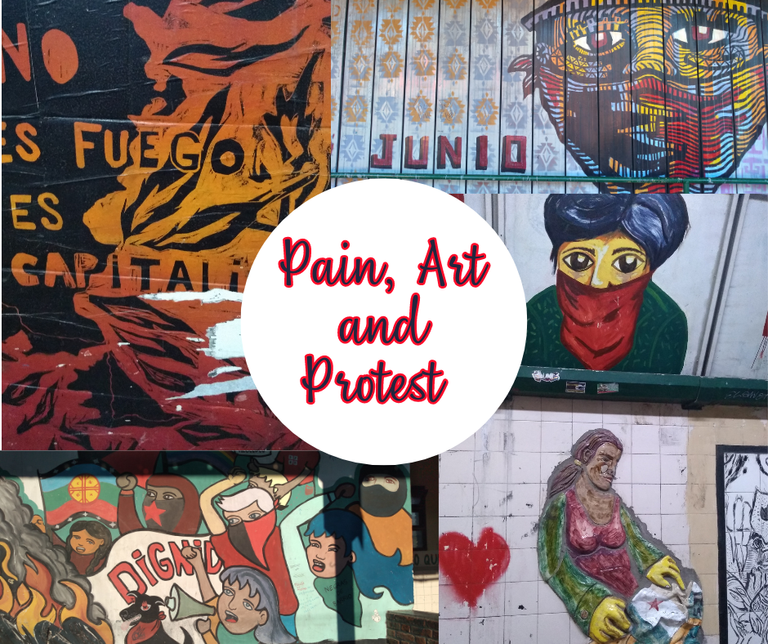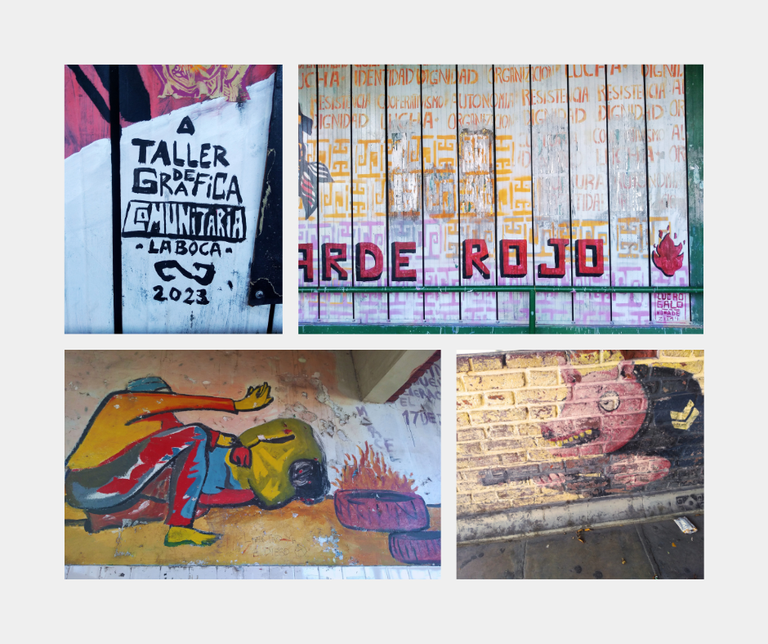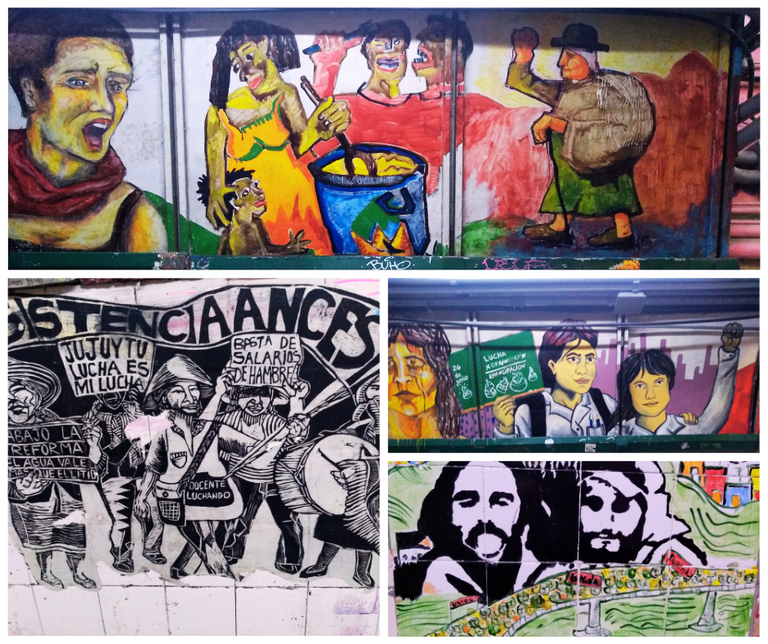
Buenos Aires cuenta con una red ferroviaria que te lleva casi a todas partes, cosa que me parece realmente excelente, sobre todo por la gran cantidad de personas que viven en la capital y sus provincias, además de que las distancias, a diferencia de mi país, son inmensas de un punto a otro dentro de la misma ciudad.
Últimamente, en mis recorridos - habituales o no- por el tren, me he dedicado a detallar las estaciones, en lugar de imbuirme en mis pensamientos o en alguna otra actividad.

Esto, es algo que aprendí en mi época de documentalista, en la que el director con quien trabajaba me decía que siempre debíamos estar no solo mirando, sino también observar cada detalle de los lugares a donde ibamos o por donde pasábamos.
Retomar esta práctica me ha ayudado a descubrir tesoros, como el que hoy les muestro, y que está justamente en una estación del tren de la línea Roca, muy cerca de la estación inicial (o final?) que nos deja en la capital del país.

La estación Darío Santillán y Maximiliano Kosteki, o como la llaman Dario y Maxi para ahorrarse unas cuantas bocanadas de aire, es una especie de galería que nos recuerda las luchas sociales, pero también la contraparte de quienes buscan frenarlos de una manera poco ética.
Pero quienes eran ellos?
Por lo general los nombres que se colocan a los lugares emblemáticos, tienen relación con un prócer o algún personaje que se haya destacado en la historia. En este caso, son un homenaje a un par de jóvenes que fallecieron en ese lugar, en medio de unas protestas.

Si bien no soy partidaria de salir a las calles, a formar "quilombo" como dicen acá, tampoco me parece que esas voces sean calladas de la manera tan atroz como algunas veces pasa con los funcionarios policiales.
Buscando documentarme un poco por internet, descubro que nada está hecho a la ligera: fue en esa estación ubicada en Avellaneda, en la que tanto Dario como Maximiliano fueron callados de manera brutal un 26 de junio de 2002 en manos de funcionarios policiales.

Convertir el dolor en arte
Cuando pasas por esa estación, sea de entrada o de salida, comienzas a ver mensajes que recuerdan lo sucedido, y para quienes como yo, desconocemos esta parte de la historia, te van poniendo en contexto.
Drenar toda la frustración producida por este hecho en arte, creo que ha sido una ganancia para quienes pasan por ahí, pues nos recuerda que los derechos simplemente no se negocian.

Lo llamativo de este lugar es que no solo hace incapié en este hecho en particular, sino en las pequeñas luchas existentes en diversos ámbitos sociales.
Es en sí, un llamado al botón para que no se bajen las expectativas de vida a cambio de favorecer a unos pocos, sino que se cree una sociedad en la que todos podamos vivir equilibradamente, no por comodismo, sino que se le de el justo valor al trabajo y el esfuerzo por encontrar el bienestar propio y colectivo.

Buenos Aires has a railway network that takes you almost everywhere, which I find really excellent, especially considering the large number of people living in the capital and its provinces, as well as the vast distances, unlike in my country, from one point to another within the same city.
Lately, on my trips - whether regular or not - on the train, I have focused on detailing the stations, instead of immersing myself in my thoughts or in some other activity.

This is something I learned in my time as a documentarian, where the director I worked with told me that we should always not only look, but also observe every detail of the places we were going to or passing through.
Resuming this practice has helped me discover treasures, like the one I show you today, which is located precisely at a station on the Roca line train, very close to the initial (or final?) station that takes us to the capital of the country.

Darío Santillán and Maximiliano Kosteki station, or as they call it Dario and Maxi to save a few breaths of air, is a kind of gallery that reminds us of social struggles, but also the counterpart of those who seek to stop them in an unethical way.
But who were they?
Generally, the names given to emblematic places are related to a national hero or some character who has stood out in history. In this case, they are a tribute to a couple of young men who died in that place, in the midst of protests.

Although I am not in favor of taking to the streets, to cause "trouble" as they say here, nor do I think those voices should be silenced in the brutal way it sometimes happens with police officers.
Looking for information on the internet, I discover that nothing is done lightly: it was at that station located in Avellaneda, where both Dario and Maximiliano were brutally silenced on June 26, 2002, by police officers.

Turning pain into art
When you pass through that station, whether on arrival or departure, you begin to see messages that remind you of what happened, and for those like me, who are unaware of this part of history, they help put you in context.
Turning all the frustration caused by this event into art, I believe has been a gain for those who pass by there, as it reminds us that rights are simply non-negotiable.

The remarkable thing about this place is that it not only emphasizes this particular event, but also the small struggles in various social realms.
It is, a call to action so that life expectations are not lowered in exchange for benefiting a few, but rather to create a society where everyone can live in balance, not out of comfort, but where work and effort are given the fair value for personal and collective well-being.
Foto/Photo by: @mamaemigrante
Edición/Edited by @mamaemigrante using canva
Translated and formatted with Hive Translator by @noakmilo.

